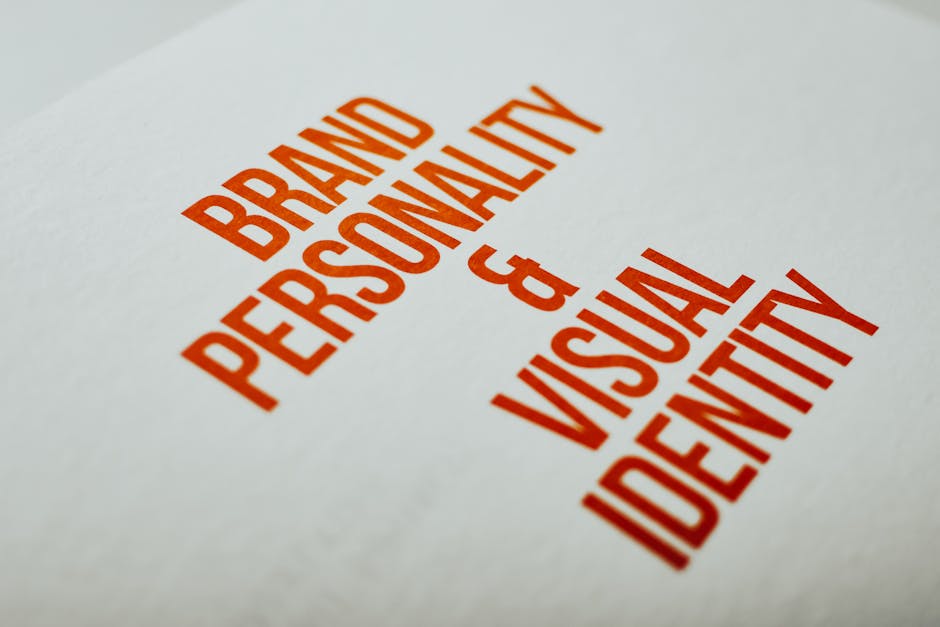
Color me intrigued! When it comes to logo design, choosing the right colors can make all the difference. After all, it’s not just about looking pretty – it’s about making a statement. So, let’s dive into the world of color psychology and explore how your choice of hues can evoke different emotions, attract certain demographics, and ultimately leave a lasting impression. Get ready to paint the town red, blue, or any color in between with our guide on choosing colors in logo design!
Understanding the Role of Color in Logo Design
Color is a powerful tool in logo design that can convey a range of emotions and messages. It’s not just about making things pretty – it’s about creating a visual language that speaks to your audience on a subconscious level.
Here are a few things to keep in mind when choosing the right colors for your logo:
- Red: This color is bold, passionate, and energetic. It can grab attention and create a sense of urgency.
- Blue: Blue is calming, trustworthy, and professional. It’s a great choice for businesses in the finance or healthcare industries.
- Yellow: Yellow is cheerful, optimistic, and youthful. It can be a good choice for brands targeting a younger demographic.
Remember, color psychology is not an exact science, so don’t stress too much about getting it perfect. The most important thing is to choose colors that reflect your brand’s personality and resonate with your target audience. So go ahead, be bold with your color choices and let your logo shine!

Color and Its Psychological Effects on Consumers
Have you ever noticed how the color of a product can subconsciously influence your purchasing decisions? It’s like going to a grocery store and seeing a bright red apple – you automatically think it’s fresh and crisp, right? Well, that’s the power of color psychology at work!
So, what are some ways in which colors can affect consumers? Let’s break it down:
- **Red:** This color is known to stimulate appetite, which is why you always see it in fast-food restaurants. Red also creates a sense of urgency, making you more likely to make a spontaneous purchase.
- **Blue:** Blue is associated with trust and reliability, which is why you often see it used in bank logos and technology companies. It also has a calming effect, making you feel more at ease when making a purchase decision.
- **Yellow:** Yellow is the color of positivity and energy, making it a great choice for brands that want to convey a sense of happiness and playfulness. It can also grab attention quickly, perfect for attracting impulse buyers.
Remember, the next time you’re shopping and find yourself drawn to a particular product, it might just be the color playing tricks on your mind. But hey, who doesn’t love a little color-induced shopping therapy, right?

Key Considerations When Choosing Colors for Logos
When it comes to choosing colors for your logo, it’s not as simple as picking your favorite shade of pink and calling it a day. There are a few key considerations to keep in mind to ensure your logo stands out and represents your brand effectively.
First and foremost, consider the psychology of colors. Different colors evoke different emotions and can have a big impact on how your logo is perceived. For example, blue is often associated with trust and reliability, while yellow is seen as energetic and optimistic. Make sure the colors you choose align with the message you want to convey.
Another important factor to consider is how your chosen colors will look across different mediums. Your logo may look perfect on your computer screen, but if it doesn’t translate well to print or signage, you may run into problems down the road. Test out your colors on different backgrounds and in various sizes to ensure they remain consistent and easily recognizable.
Lastly, don’t be afraid to get creative with your color choices. Sure, black and white may be classic, but why not add a pop of neon green or a splash of hot pink to really make your logo stand out? Just remember to keep it cohesive and avoid overwhelming your design with too many competing colors. After all, you want your logo to be memorable for the right reasons!

Harnessing the Power of Color to Build Brand Identity
Let’s be honest, color is like the superhero of branding. Without it, brands would just be bland blobs floating in a sea of sameness. So, how do you harness this magical power to build an unforgettable brand identity?
First of all, you need to choose your colors wisely. Think about what emotions you want your brand to evoke. Do you want to be seen as playful and fun? Go for bright, vibrant colors. Want to convey a sense of trust and reliability? Stick to more muted, neutral tones. And remember, colors can have different meanings in different cultures, so do your research before you commit.
Next, you need to think about how you use your colors. Don’t just slap them on willy-nilly, think about how they work together to create a cohesive brand image. You might want to stick to a strict color palette for consistency, or you could mix things up to keep things interesting. Just make sure whatever you do, it’s intentional.
And finally, don’t be afraid to get creative with how you use color. Experiment with different combinations, try out unexpected pairings, and don’t be afraid to break the rules every once in a while. After all, the most memorable brands are the ones that aren’t afraid to stand out from the crowd.

The Influence of Color on Brand Perception
When it comes to brand perception, the influence of color cannot be underestimated. Colors have the power to evoke emotions, create associations, and shape how customers perceive a brand. In fact, studies have shown that up to 90% of snap judgments made about products can be based on color alone!
So, what does this mean for brands? It means that choosing the right color palette is crucial for creating the desired brand image. Here are a few ways in which color can influence brand perception:
- Red: The color of passion and excitement, red is often used to evoke a sense of urgency or to create a bold, attention-grabbing look.
- Blue: Blue is commonly associated with trust and reliability, making it a popular choice for brands looking to establish themselves as authorities in their industry.
- Yellow: Bright and cheerful, yellow is often used to convey a sense of optimism and energy, perfect for brands looking to appeal to a younger audience.
Ultimately, the colors you choose for your brand can make a big impact on how consumers perceive your products or services. So, next time you’re deciding on a color scheme, remember: It’s not just a choice of aesthetics – it’s a strategic decision that can shape your brand’s identity!
Selecting the Right Color Palette for Your Logo
When it comes to selecting the perfect color palette for your logo, it’s important to choose hues that not only represent your brand but also catch the eye of your target audience. Here are some tips to help you find the right colors for your logo:
- Consider your brand personality: Are you a fun and quirky brand or a more serious and professional one? Choose colors that match the vibe you want to convey.
- Think about color psychology: Different colors can evoke different emotions. For example, blue is often associated with trustworthiness and reliability, while red signifies passion and energy.
- Don’t be afraid to stand out: While it’s important to be mindful of color trends, don’t be afraid to go against the grain and choose a unique color palette that sets your logo apart from the competition.
Remember, your logo is often the first thing that customers will see when they interact with your brand, so make sure you choose colors that make a lasting impression. And most importantly, have fun with it!
Utilizing Color Theory to Create Memorable Logos
When it comes to creating a killer logo that sticks in people’s minds, utilizing color theory is key. No, we’re not talking about throwing every color of the rainbow into your design and hoping for the best. We’re talking about strategic color choices that will make your logo stand out from the competition.
So, how can you use color theory to create a logo that people will remember? Here are a few tips:
- Understand the psychology of color: Different colors evoke different emotions and associations, so it’s important to choose colors that align with your brand’s message. For example, red is often associated with passion and energy, while blue conveys trust and reliability.
- Use a limited color palette: Too many colors can overwhelm the viewer and dilute your message. Stick to a few key colors that complement each other and convey the right vibe for your brand.
- Contrast is key: Make sure there is enough contrast between the various elements of your logo to ensure it is easily readable and visually appealing. This will help your logo make a strong impact and stand out in a crowded marketplace.
By incorporating these tips into your logo design process, you can create a memorable and visually striking logo that will leave a lasting impression on your audience. So, don’t be afraid to get creative with color and experiment with different combinations until you find the perfect match for your brand.
FAQs
Why is color selection important in logo design?
Because if you choose the wrong color, your logo could end up looking like a sad clown at a funeral.
How do different colors evoke different emotions in people?
Well, for example, red can make us feel passionate or hungry, while blue can make us feel calm or sad. So choose wisely, unless you want people bursting into tears every time they see your logo.
What colors are best for creating a sense of trust and reliability?
Definitely not neon green or hot pink. Stick to blues, greens, and grays if you want people to trust you enough to actually buy your product or service.
How can color impact brand perception?
Think of color as your logo’s way of dressing for success. Use the right colors, and your brand will be seen as sophisticated and trendy. Use the wrong colors, and your brand will be seen as the fashion equivalent of Crocs and socks.
Are there any rules or guidelines to follow when choosing colors for a logo?
Yes, the most important rule is to avoid using clashing colors like orange and purple unless you want your logo to be banned from fashion week.
Color Your Logo World!
Thanks for reading about the wacky world of choosing colors in logo design! Remember, there’s more to color than meets the eye – it’s all about the psychological impact. So go forth and conquer the design world with your newfound knowledge of hues, shades, and tints. And remember, never underestimate the power of a well-chosen color palette. Keep on coloring!












